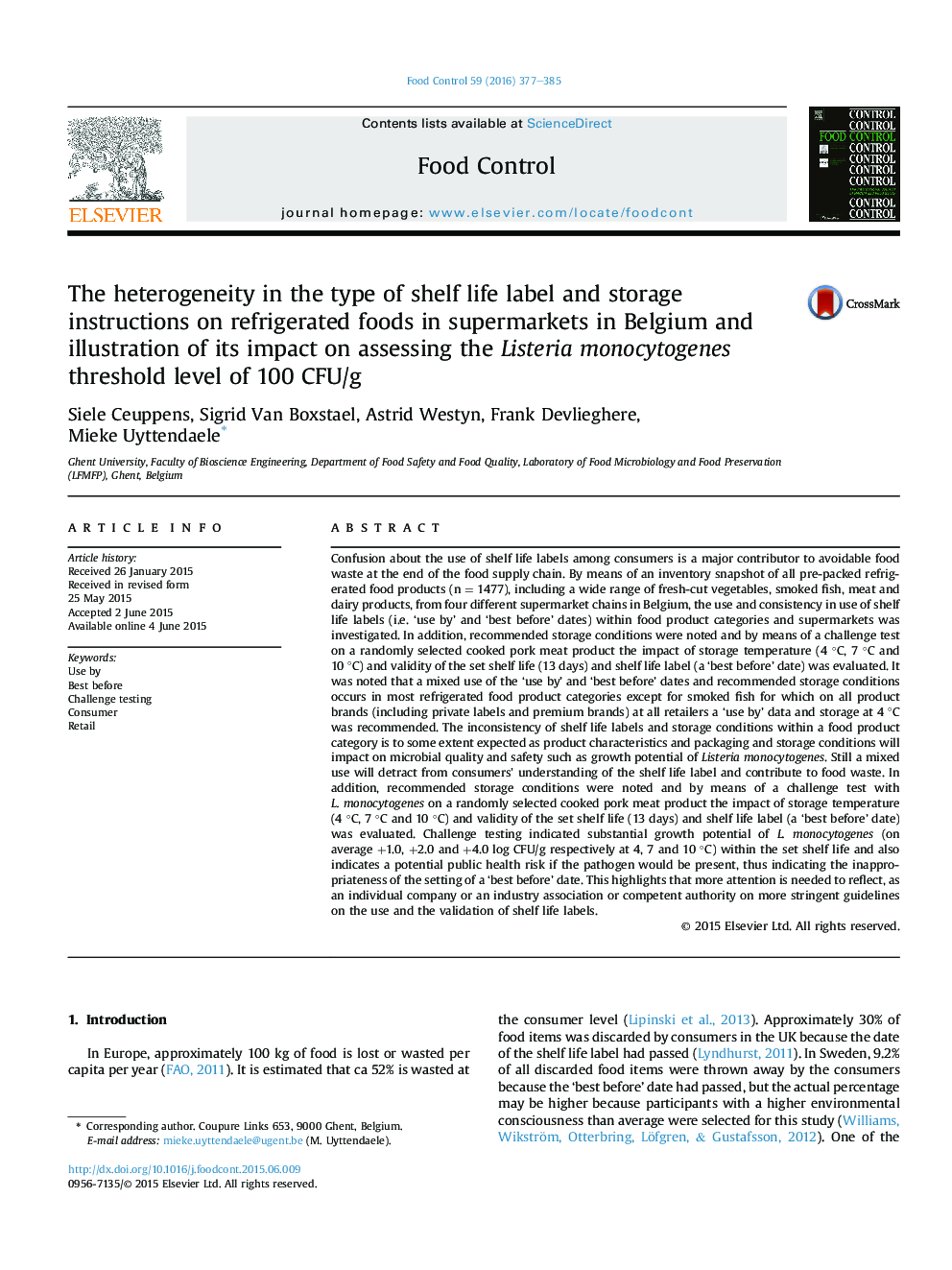| کد مقاله | کد نشریه | سال انتشار | مقاله انگلیسی | نسخه تمام متن |
|---|---|---|---|---|
| 6390585 | 1628403 | 2016 | 9 صفحه PDF | دانلود رایگان |

- Inventory snapshot of refrigerated foods showed inconsistencies in shelf life labeling.
- Inappropriate shelf life information was observed, presenting a potential health risk.
- No specific storage temperature indicated on 8.4% of the refrigerated products.
- Use of 'best before' date on meat product in which Listeria monocytogenes can grow.
Confusion about the use of shelf life labels among consumers is a major contributor to avoidable food waste at the end of the food supply chain. By means of an inventory snapshot of all pre-packed refrigerated food products (n = 1477), including a wide range of fresh-cut vegetables, smoked fish, meat and dairy products, from four different supermarket chains in Belgium, the use and consistency in use of shelf life labels (i.e. 'use by' and 'best before' dates) within food product categories and supermarkets was investigated. In addition, recommended storage conditions were noted and by means of a challenge test on a randomly selected cooked pork meat product the impact of storage temperature (4 °C, 7 °C and 10 °C) and validity of the set shelf life (13 days) and shelf life label (a 'best before' date) was evaluated. It was noted that a mixed use of the 'use by' and 'best before' dates and recommended storage conditions occurs in most refrigerated food product categories except for smoked fish for which on all product brands (including private labels and premium brands) at all retailers a 'use by' data and storage at 4 °C was recommended. The inconsistency of shelf life labels and storage conditions within a food product category is to some extent expected as product characteristics and packaging and storage conditions will impact on microbial quality and safety such as growth potential of Listeria monocytogenes. Still a mixed use will detract from consumers' understanding of the shelf life label and contribute to food waste. In addition, recommended storage conditions were noted and by means of a challenge test with L. monocytogenes on a randomly selected cooked pork meat product the impact of storage temperature (4 °C, 7 °C and 10 °C) and validity of the set shelf life (13 days) and shelf life label (a 'best before' date) was evaluated. Challenge testing indicated substantial growth potential of L. monocytogenes (on average +1.0, +2.0 and +4.0 log CFU/g respectively at 4, 7 and 10 °C) within the set shelf life and also indicates a potential public health risk if the pathogen would be present, thus indicating the inappropriateness of the setting of a 'best before' date. This highlights that more attention is needed to reflect, as an individual company or an industry association or competent authority on more stringent guidelines on the use and the validation of shelf life labels.
Journal: Food Control - Volume 59, January 2016, Pages 377-385